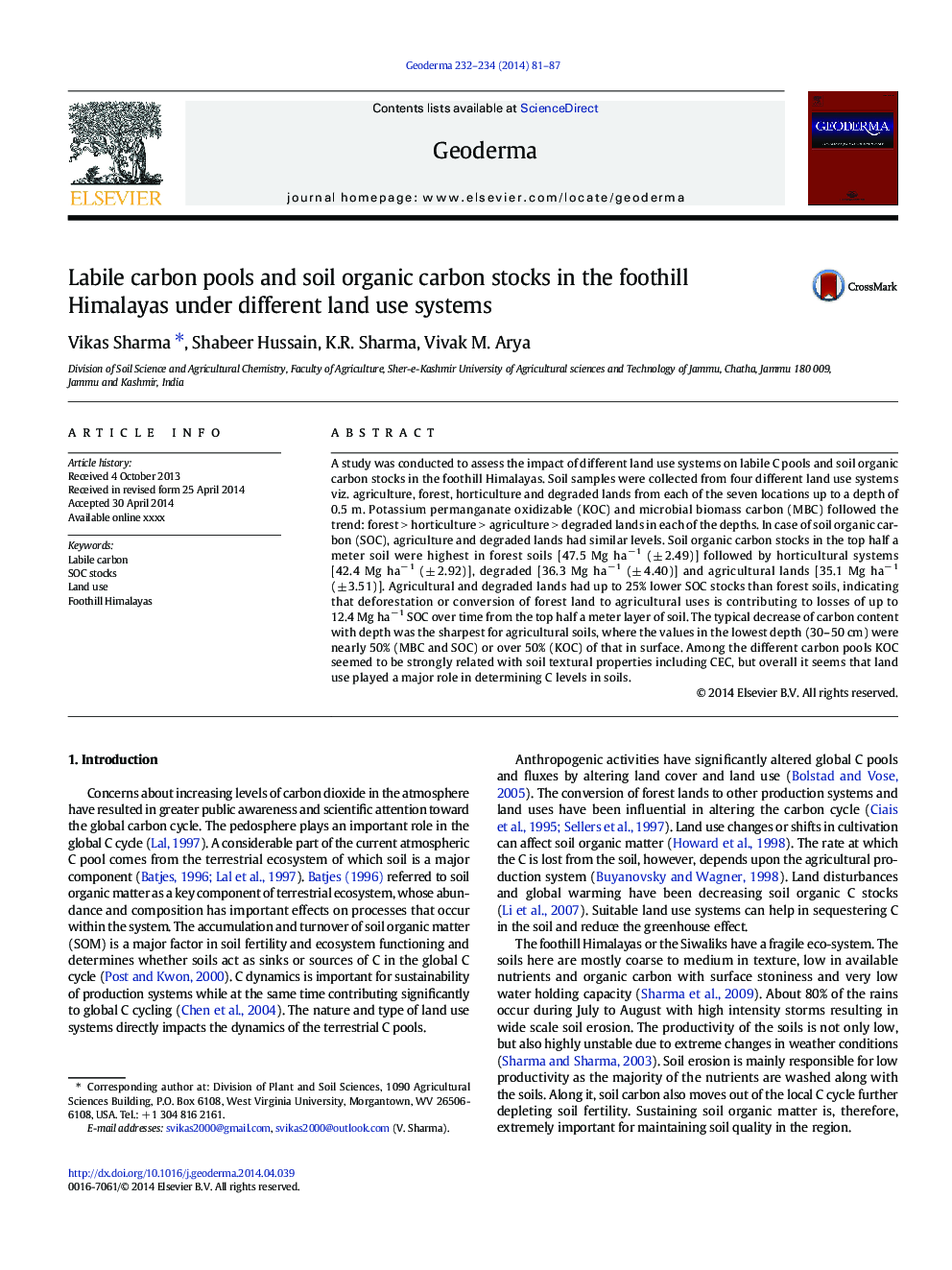| Article ID | Journal | Published Year | Pages | File Type |
|---|---|---|---|---|
| 6408700 | Geoderma | 2014 | 7 Pages |
Abstract
A study was conducted to assess the impact of different land use systems on labile C pools and soil organic carbon stocks in the foothill Himalayas. Soil samples were collected from four different land use systems viz. agriculture, forest, horticulture and degraded lands from each of the seven locations up to a depth of 0.5 m. Potassium permanganate oxidizable (KOC) and microbial biomass carbon (MBC) followed the trend: forest > horticulture > agriculture > degraded lands in each of the depths. In case of soil organic carbon (SOC), agriculture and degraded lands had similar levels. Soil organic carbon stocks in the top half a meter soil were highest in forest soils [47.5 Mg haâ 1 (± 2.49)] followed by horticultural systems [42.4 Mg haâ 1 (± 2.92)], degraded [36.3 Mg haâ 1 (± 4.40)] and agricultural lands [35.1 Mg haâ 1 (± 3.51)]. Agricultural and degraded lands had up to 25% lower SOC stocks than forest soils, indicating that deforestation or conversion of forest land to agricultural uses is contributing to losses of up to 12.4 Mg haâ 1 SOC over time from the top half a meter layer of soil. The typical decrease of carbon content with depth was the sharpest for agricultural soils, where the values in the lowest depth (30-50 cm) were nearly 50% (MBC and SOC) or over 50% (KOC) of that in surface. Among the different carbon pools KOC seemed to be strongly related with soil textural properties including CEC, but overall it seems that land use played a major role in determining C levels in soils.
Keywords
Related Topics
Physical Sciences and Engineering
Earth and Planetary Sciences
Earth-Surface Processes
Authors
Vikas Sharma, Shabeer Hussain, K.R. Sharma, Vivak M. Arya,
